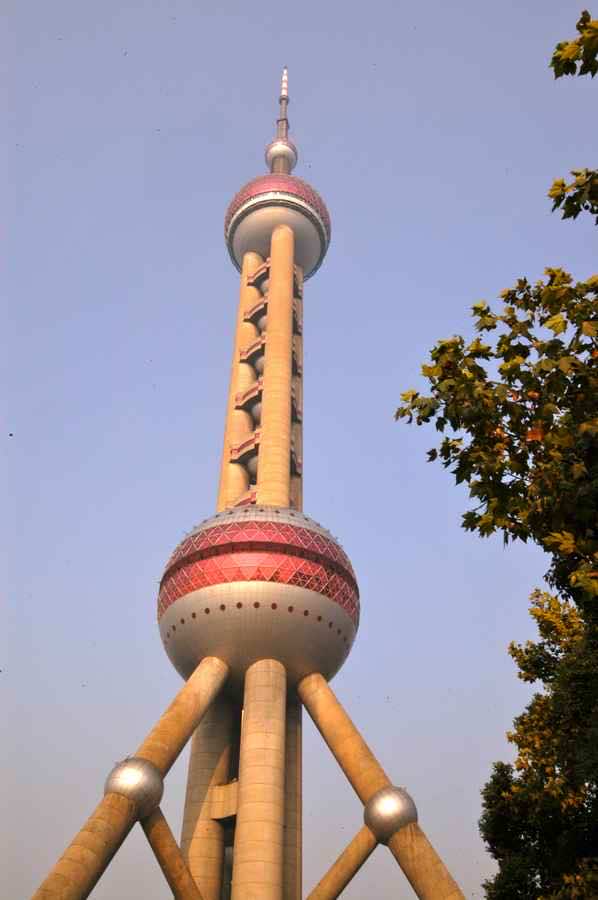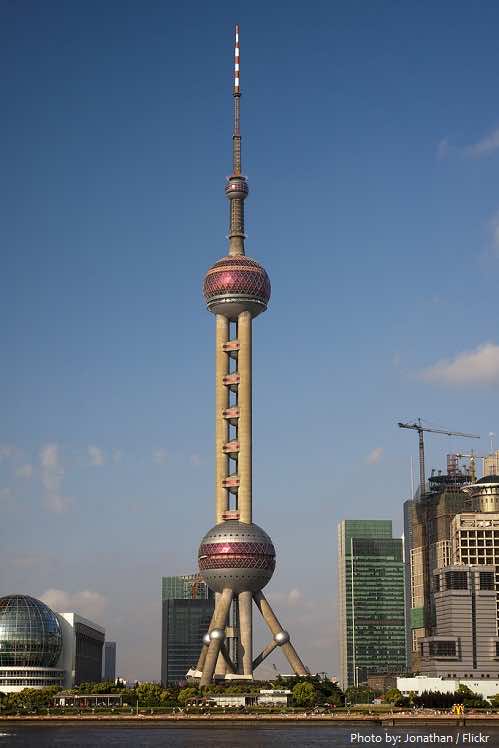The Oriental Pearl Radio & Television Tower is a communications and observation tower located in Shanghai, China. Its located at the tip of Lujiazui in the Pudong New Area by the side of Huangpu River, opposite The Bund, it holds the distinction of being a major landmark in the area. Its principal designers were Jiang Huan Chen, Lin Benlin, and Zhang Xiulin. Construction began in 1991, and the tower was completed in 1995. At the time, at 468 m (1,536 feet) high, it was the tallest structure in China, a record it held from 1994–2007.

The architect used a contemporary design language, but the design concept is based on ancient China. The building is based on a verse of the poem by Bai Juyi Pipa Song, about the wonderful sounds of the instrument pipa, such as pearls, large and small to fall on a plate of jade. Thus, the Pearl of the Orient forms a relationship with the Yangpu Bridge to the northeast and the Nanpu Bridge in the southwest, symbolizing “two dragons playing with pearls falling from the sky over a plate of jade.”

The design is composed of 11 areas or “pearls” of different sizes. The highest area is an observatory of 14 m in diameter, called the Space Module (Space Module) located 350 meters from where you can see fantastic views of the city, especially the Bund. The second area of 45 m in diameter, contains a revolving restaurant 263 meters high and that a complete rotation every hour, plus there is a second viewpoint called the house Widescreen (Sightseeing Floor), to 259 m. They follow a series of smaller areas, which form the rooms of Hotel Space (Space Hotel). The largest area (50 m in diameter) is a third observatory located 90 m and is named the Space City (Space City) and that accommodates a futuristic city. An antenna that transmits television and radio signals rises above these spaces at the top of the tower and is over 118 meters tall. At the very base of the tower is the Historical Museum of the city which interacts with the city at the street level.



